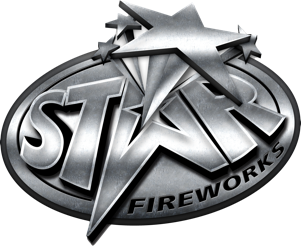An Explanation Of PWSK Courses Within The Firework Industry
This Article First Appeared In Fireworks Magazine Autumn 2018
It never ceases to amaze me how many people show interest (and indeed then train) on 3rd party run ‘Person with Specialist Knowledge’ (PWSK) courses. These are completely different to the BPA’s long established firers training courses, which have been accredited by City and Guilds. I am not suggesting 3rd party PWSK courses are bad in any way, I’m just amazed because there seems to be a real confusion over what a PWSK is, and why you need the training.
A ‘Person with Specialist Knowledge’ is clearly defined in Schedule 4 of the Regulations (Pyrotechnic Articles (Safety) Regulations 2015) and the law states that you cannot ‘make available on the market’ an F4 firework, except to a Person with Specialist Knowledge. The confusion in my view is over this term ‘make available on the market’ which fortunately is defined in the Regulations as ‘any supply for distribution, consumption, or use on the EU market in the course of a commercial activity, whether in return for payment or free of charge’. The government guidance document on the Regulations discusses supply between a supplier and a customer.
If you think about it, supply must be between a supplier and a customer and rightly so. If it was between a supplier and its own firing crew, then you would break the law with every person in training or every person who didn’t have a BPA firers qualification. Additionally, to be a PWSK, you need valid insurance and to have already used category F4 fireworks. In my view, PWSK courses are probably more suited to those running a business, and who wish to be supplied with professional F4 fireworks, rather than their firers. For firers, a course such as that run by the BPA may be the best answer. The government guidance recommends that ‘in respect of training of persons of specialist knowledge for Category F4 fireworks, it has been agreed by the industry and BEIS that such training should be accredited by an appropriate certification body. Examples of training courses can be found on The British Pyrotechnics Association (sic) website’.
The Journal of Pyrotechnics recently published a new paper written by Tom Smith, Avril DiPalma, Gabrielle DiPalma and Lincoln Parkhouse on ‘An investigation into the sensitivity of commonly used electric igniters’. Three organisations (CBI/EIG, British Pyrotechnists Association and The Event Services Association) contributed to the funding of a small research project into igniter sensitivity.
The paper recognises among many points what it estimates to be roughly a 100-fold increase in use of electric igniters in firework displays over the last 30 years and the fact that historically in a number of incidents around the world, igniters have been considered to the cause.
The paper tested a range of igniters in impact, shearing, friction and static discharge tests. The object of the authors was to develop a range of tests that could be relatively easily reproduced by users.
The overall outcomes may not be of surprise to everyone in the industry. The authors found it hard to reproduce results time after time in some of the tests; also an igniter sensitive to one stimuli may be less sensitive to another. The effect of the shroud is discussed in the paper, with results suggesting that it does provide significant protection against crush and shear stimuli but that contamination with materials such as black powder trapped between bead and shroud may alter the protection significantly.
The authors plan further work which will include addressing the development of reproducible tests and testing a wider range of igniters. Industry peers now have the opportunity to make constructive comments on the findings and suggestions for additional future improvements.
It is certainly an interesting read and the paper can be freely downloaded (following site registration) via this link http://www.jpyro.co.uk/?p=1840
Finally, I can tell you that industry continues to engage with the government on future outcomes post-Brexit. It’s clear that BEIS has been doing a lot of work behind-the-scenes to prepare for the changes that may be needed within all industries once the UK leaves the European Union. The Pyrotechnic Articles Liaision Group (PALG) meets periodically (next meeting May 2018) and includes representatives from BEIS, HSE, Trading Standards, the Police, Fire Service, BFA, BPA, EIG and others and ensures that the views of all stake-holders are taken into consideration as this work and other work continues. It’s fair to say that there will be no swift resolutions here, but at least a general shape/direction on common ground may start to take shape, hopefully sooner rather than later.

